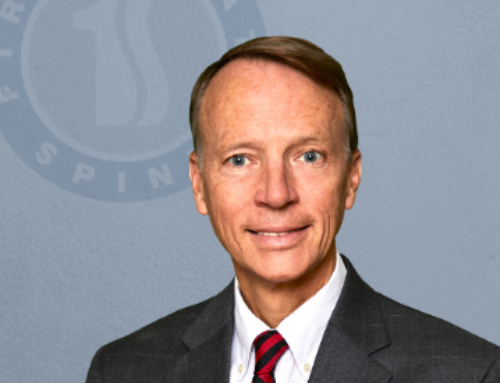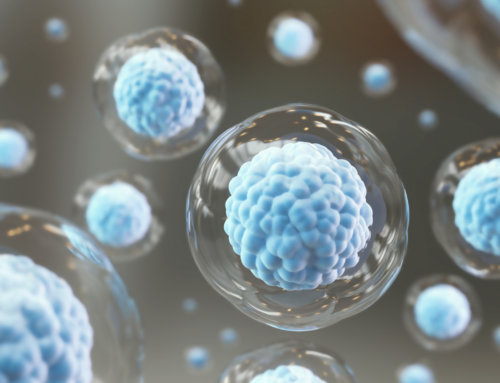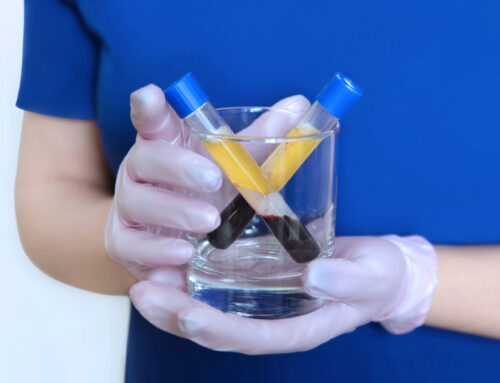Listen to the whole interview here, or read the transcript below:
Peter MacArthur: It’s 9:10pm now here on Del-Aware on WDEL, on Tuesday, November 9th, and I’m Peter MacArthur. Maybe in your case, it started as a slip or a trip or a fall, maybe you used to dismiss it as “I slept funny.” But what you’re realizing as time goes on is that you have neck and back issues that aren’t going away. And maybe you suffered in silence for years with what you know are serious neck and back issues.
And yet, surgery can be scary. It’s invasive. The results can be a bit complicated and unpredictable, but that is not the only avenue that you can go down. Joining us now to talk a little bit about an alternative here is Dr. Jay Downing with First State Spine. Hey doctor, good morning!
Dr. Downing: Good morning, Peter. Thank you for having me.
MacArthur: Absolutely glad to have you. When you look at the picture of a spine, we’ve all seen back in school and I’m sure in medical school, you see it all the time. The picture of the spine, it’s quite a complex system, but we ask a lot of our backs and necks on a day-to-day basis.
Dr. Downing: That’s an excellent point. The lumbar and cervical spine, when you look at a skeleton, you’ll realize that we, and no disrespect to our Creator, are not really designed for walking on our hind legs. You look at the shoulder and hip joints: They are robust ball and socket joints.
The lumbar and cervical spine are a little more fragile. And that’s why they’re frequently a source of wear and tear degeneration, which, ultimately, manifests itself as pain or limited abilities to do the things we want to do.
MacArthur: And as we referenced up top, I mean, some people have a degree of pain that they can manage or deal with, but for some other people, it becomes really insufferable. And, up until recently, the options kind of were limited to surgery, which is a tough call for people.
Dr. Downing: Well, the general algorithm for treatment is we ignore minor problems. If they persist, then simpler steps such as nonsteroidal anti-inflammatories typically Motrin or when that’s not working, physical therapy or chiropractic care. But when those more conservative steps aren’t useful, that’s when people frequently end up seeing a spine surgery specialist. Where I dovetail into this, I’m an anesthesiologist and board certified in interventional pain medicine.
And for the last 20 years, my partners and I have exclusively been dealing with nonsurgical treatment of the spine, typically with corticosteroid injections and injections of local anesthetic around a swollen disc or a painful nerve root. However, over the last, really this regenerative treatment has been around for 20 or 30 years, but it’s becoming more and more common.
Much of the research has been done in hip and knee joints, but more and more work is being done for regenerative medicine treatments of the cervical and lumbar spine. And that’s why our group decided to develop an interest and an expertise in that area.
MacArthur: How does it work in kind of a lay person’s terms if that’s at all possible?
Dr. Downing: That’s a really good question. I guess the simplest answer is we don’t entirely understand how it works. When you think about it, our bodies, the cartilage in our joints, the cartilage in our discs, every cell in our body derives from a single cell. So the information to make an entire human derives in the genetics of a single cell.
What makes us develop is that we have regulated how our cells develop. So some cells go on to be heart muscles, some cells go on to be chondrocytes to make cartilage. And so the real key here is to try to figure out what regulates that growth. Why do we, as we age, why does our cartilage not replenish effectively?
There are messengers in the cells that help control that. It gets confusing as you’ve alluded to because people talk about stem cells and the idea there is like, you know, an egg can become an entire organism. Or if you plant a stem cell you’ll magically grow fresh cartilage.
It’s just not that simple. What appears to be going on is a mixture of the messengers or cytokines, the small proteins that are in cells help direct growth, control, and senescence, which is aging. And so what we’re really trying to do here is capture the cells in our body, the messengers that help rejuvenate or regenerate, in our case cartilage, because that’s what we care about in joints. But it could be effective in other parts of the body too. But what we’re focusing on is the cartilage in the disks, the cartilage in the joints.
MacArthur: And you’ve seen over time, you mentioned this regenerative medicine has been around for a time. This is kind of a fine-tuning of it in, in your case where you’re finding an application that works for the neck and back.
Dr. Downing: Right. I am a very conservative person by nature where, you know, I dip my toe in before I jump into anything. Regenerative Medicine is around. There are departments of regenerative medicine, the hospital for special surgery in New York and Harvard Medical School. This is not experimental, but it is on the newer side.
So we started doing these cases about two years ago, and I’ve personally done about 30 or 40 cases on the spine. Our group has done 60 or 70 cases now, and the results are very encouraging. We are partnering ourselves with experts in the nation on regenerative medicine techniques. And it’s been very gratifying because, as you mentioned earlier, once you have failed the conservative steps, such as physical therapy and medications, and you’re looking at the option of surgery, that is not a great option.
The success rate is somewhere between 50 and 60%. It’s not a great option. If you came into me and you had a cancerous mole on your skin, a hundred out of a hundred doctors would say you have surgery and remove it. There’s just no equivocating on that. But reconstructive surgery for the spine is a big step.
It’s just obvious. And so if there’s a step that is, you know, intermediate and you’re not burning any bridges, I think that it behooves us to offer that to our patients and because myself and my partners, I mean, I’ve done tens of thousands of spinal injections. I’m really good at doing procedures. What’s different here is that we’re now adding in the bone marrow concentrate and platelet-rich plasma. It’s gratifying because, so far, and again, it’s a relatively small sample of 60 or 70 patients, about 70% of the people have 50% reduced pain and increased mobility at the 3-12 month follow-up, which is really what matters. The proof of the pudding is in the eating.
MacArthur: Dr. Jay Downing here from First State Spine and Regenerative Medicine in Newark, by the way, a local office, you can go to. Who benefits? Who listening right now that has neck and back pain can be a candidate, if you will, for the kind of treatment we’re talking about.
Dr. Downing: Well, as I said, we never treat someone who has a couple of days of neck or back pain. They just wouldn’t come to see me yet. The people that are the candidates are people who have failed traditional conservative measures, such as anti-inflammatories for a few months, physical therapy for a few months.
It’s usually after about roughly six months of pain. The patients that we’re typically treating are in actually a wide range. People between their twenties and seventies, so there’s no real age cutoff. It has to do more with the nature of the problem.
Now, if it’s a severe trauma with broken spinal bones, then surgery is the correct option. What we’re talking about is more the degenerative or wear and tear problems, which can occur just from aging or they can occur from an accident, be it auto or industrial. When you think about it, an auto accident or an industrial accident puts 10 or 20 years of wear and tear on your spine in an instant. But when you look at an MRI of someone who’s suffered a fall, it’s not that different than someone who has suffered 20 years of heavy lifting – it’s degenerative process.
MacArthur: So a person comes into your office and you kind of maybe go through some questions and answers to find out if in fact what they have can be potentially fixed by what you have to offer. How does the process itself work? How does the regenerative medicine program move from there?
Dr. Downing: Well, if someone comes in and is evaluated and is an appropriate candidate for this, and thus far, the people we are treating are literally people who are seriously considering surgery. So the medical term for that is surgery indicated, and that would mean that you’ve exhausted conservative measures.
So we’re not trying to replace ibuprofen with this procedure. We’re trying to give an alternative to surgery. And so, if that is the case, we do an appropriate physical exam, laboratory testing, x-ray evaluation. We want people to improve their nutrition before the test. And then if you’re a candidate, you can undergo the procedure. The procedure is relatively straightforward. It takes about 60 to 90 minutes, an outpatient procedure, go home the same day. If you’re interested, I can talk briefly about how it’s done, but it’s a relatively simple procedure.
MacArthur: Yeah, please do. Please do.
Dr. Downing: So the two main components that we’re using are platelet-rich plasma, which is your own blood drawn. I guess, I want to emphasize that nothing we use is from anyone but the patient. In other words, some of the stories you read about complications related to these treatments have had to do with when, and also the FDA regulation of this, has had to do when people are taking cells from umbilical cords or amniotic fluid from a stranger and injecting them into the patient. We don’t do any of that. Everything we do is based on your blood and your own bone marrow. So you come into the center, a nurse draws some of your own blood. We spin it down to concentrate the platelet-rich plasma. Then it’s just, for example, we’re doing the low back, you’d come into one of the operating rooms. This is done at a Medicare-approved surgery center, high degree of sterility, nurses, certified anesthetists. It’s very good care. We extract your own bone marrow by anesthetizing the skin around your hip and putting a needle into the pelvic bone, sucking out some of the marrow.
Then we spin that down or concentrate it right there at the center. Then, again under local anesthesia, along with intravenous sedation, using x-ray guidance, if we’re working on a lumbar disc, I would put a very thin needle into the disc that we’re interested. Then inject your own concentrated bone marrow and platelet-rich plasma into the disc.
The disc is the cushion between the bones and the spine. Degeneration or wear and tear or collapse of the disc is a leading cause of what’s wrong with people’s backs. So we inject some of your concentrated bone marrow, your concentrated platelet-rich plasma into the disc with a needle, and put on a Band-aid. Recovery in the center is usually a half-hour to an hour. You go home. We see some soreness for a few days afterward, but many patients can return to office-based work within a week or two. If it’s heavier duty work, the recovery would be about a month or so to allow the area to regenerate.
MacArthur: The regeneration, I’m guessing in some form starts almost immediately. When do patients generally, is there a ballpark of when they start to feel, notice the difference?
Dr. Downing: Yes. Once the procedural soreness has gone which is after the first few days, that’s when we start to see betterness. What we really care about is after three to six months. You know, it’s one thing to make someone feel good for a few days that, you know, from local anesthetic or medications. The real goal here is to improve long-term function and improve the long-term pain score.
So what I really care about is the three, six and 12-month follow-up.
MacArthur: Where does the FDA stand on this? Do they have a formal policy or where do things go with that?
Dr. Downing: The key there is that we’re doing everything in a Medicare-approved surgery center. We’re using all FDA approved equipment and we’re not using anything from the outside.
In other words, if we draw your blood or I extract your bone marrow, it doesn’t go anywhere else. You’re not getting anyone else’s products. Everything is, the word is autologous, meaning from you back to you. And so the risk of infection or processing problems well there is none. You can’t get infected from someone else because it’s your own blood products.
We really are going out of our way. Well, I mean, we’re just doing the best job we can. We don’t want anything to go wrong. We are very fastidious about, you know, following the rules, doing the best possible job.
MacArthur: And with your experience, it just seems to be talking back and forth about it, that you’ve seen things within this technology, if you will, that really can give people a sense of hope.
Dr. Downing: Oh, it’s very gratifying. The interesting thing about First State Spine is again, my background is in anesthesiology and pain management. One of our other partners is one of the most experienced spine surgeons in the state. The tools we had were limited. Reconstructive spine surgery is a big deal with screws and bolts put in your back.
When you see x-rays of people, it’s a big deal. And to be able to offer people another option. And we’re not saying this is, you know, it’s not a magic bullet. There is no magic bullet for this kind of problem. But to give people an option and you’re not burning any bridges. Of the 70 or so patients that we’ve treated so far, I believe four now have proceeded to traditional surgery.
So it’s not like you’re picking one path and you have to stay on it. If Regenerative Medicine doesn’t work for you, you still have the option of reconstructive surgery. Now the converse is not true. Once you have reconstructive surgery, you can’t undo it. It’s an option. It’s also, pragmatically, hugely less expensive than reconstructive surgery. It takes you out of the workforce and away from home for less period of time. So it’s attractive on many levels, but the most important thing is we have to prove that it works as well, if not better then reconstructive surgery. Thus far, that seems to be the case.
MacArthur: Dr. Jay Downing is with First State Spine and Regenerative Medicine. People that are listening now, I guarantee you we’re into some ears with this message. What do you think their next steps should be? I mean, what’s a good first step. If they have some interest in what we just talked about to maybe start the ball rolling, at least exploring that path.
Dr. Downing: You could talk to your family doctor or a surgeon that you’re already dealing with, or contact us directly at First State Spine to set up a consultation. It’s just that simple. There’s no doctor worth his beans would be upset if a patient gets a second opinion.
To get in touch with the doctors at First State Spine, fill out the form below:





